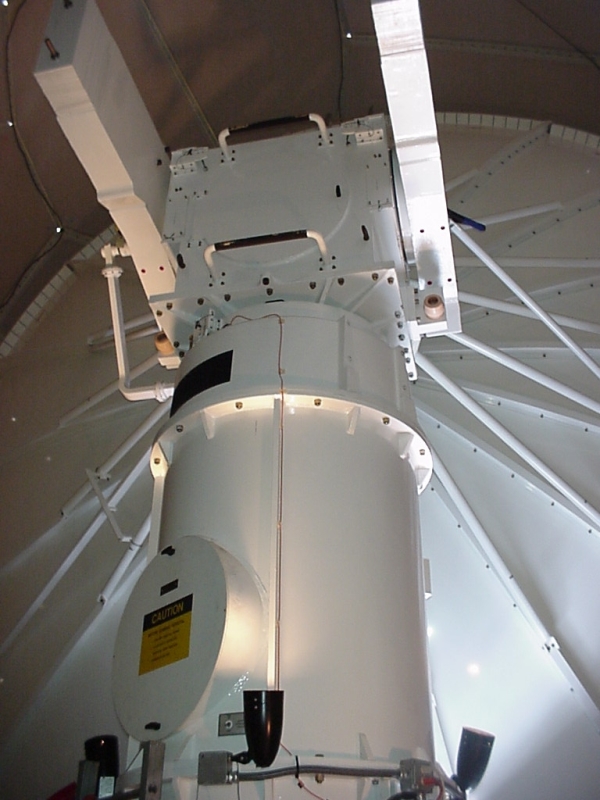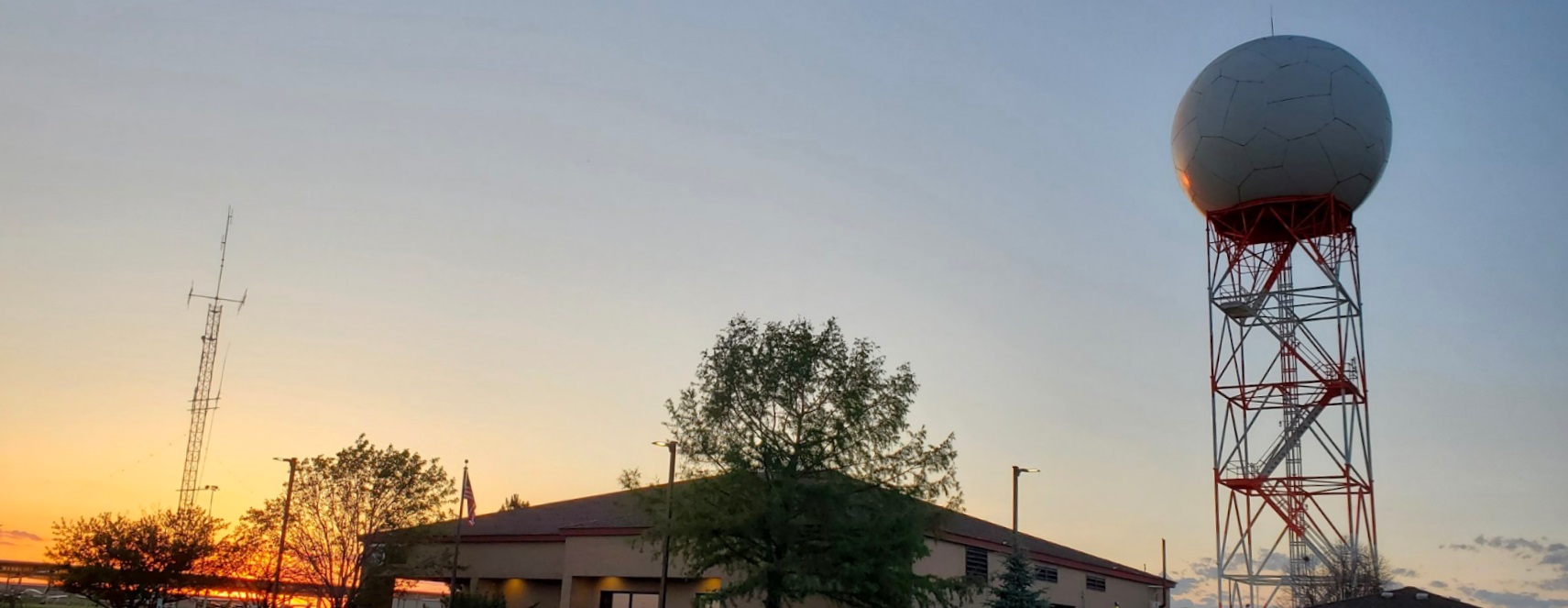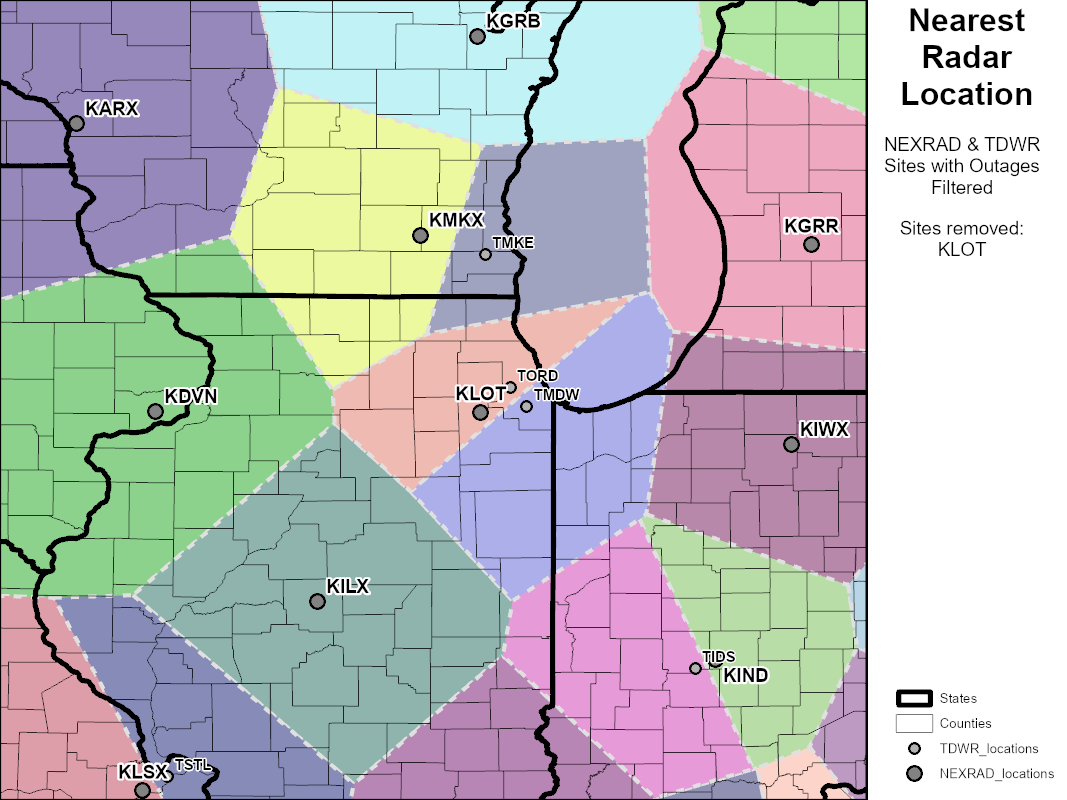|
General Information Beginning Monday, May 9, 2022, the KLOT WSR-88D radar operated by the NOAA National Weather Service in Romeoville, IL, will be down for approximately two weeks as part of the Service Life Extension Program (SLEP). During this downtime, adjacent radars that will continue to provide data over our area include: TORD (O'Hare Airport FAA Terminal Doppler Radar), TMDW (Midway Airport FAA Terminal Doppler Radar), TMKE (Milwaukee FAA Terminal Doppler Radar), KMKX (Milwaukee, WI), KDVN (Davenport/Quad Cities, IA), KILX (Lincoln, IL), KIWX (North Webster, IN), KIND (Indianapolis, IN). For direct access to any of these surrounding radar sites, see the Surrounding Radars section below. Pedestal Details During this outage, the radar's pedestal will be replaced. The pedestal is a 16 foot tall, approximately 15,000 pound structure (pictured at right), that both supports and turns the large 28 foot diameter, 2,100 pound parabolic dish. This will require the removal of the protective radar covering, entire parabolic dish, and pedestal. Because the radar is spinning 24 hours a day and 365 days a year, the pedestal takes on a considerable amount of wear and tear. Much like preventative maintenance for a car, the pedestal replacement will ensure the radar will continue functioning reliably for decades to come. |

Image of the top half of the 16 foot tall, ~15,000 pound pedestal supporting the large 28 foot diameter radar dish. Image courtesy of the Radar Operations Center. |

Upgrade Details
Technicians will refurbish and replace the pedestal, one of the most critical components of the radar, which is necessary for antenna rotation and positioning to capture data in all directions. The components are extremely heavy and will require the radome to be removed by crane and replaced when the work is completed.
The radar and pedestal were designed to last 25 years, and this radar has exceeded its life-span. This activity is necessary to keep the radar functioning for another 20 years or more.
The pedestal refurbishment is the third major project of the NEXRAD Service Life Extension Program, a series of upgrades that will keep our nation’s radars viable into the 2030s. NOAA’s National Weather Service, the United States Air Force, and the Federal Aviation Administration are investing $135 million in the eight year program. The first project was the installation of the new signal processor and the second project was the refurbishment of the transmitter. The third project will be the refurbishment of the equipment shelters. The Service Life Extension Program will be complete in 2023.
You can watch a time lapse of the radome and pedestal removal and replacement from the NWS Pendleton, OR office at the link below to get an idea of what's involved in the process:
https://www.youtube.com/watch?v=jC5Hcl7RcbE
FAQs
Will the radar outage impact warning operations?
During active weather, NWS forecasters routinely utilize data from nearby radars, several of which are in the Chicago area, not just the one at their local office. There is extensive doppler radar coverage across northern Illinois and northwest Indiana, including two very high resolution Terminal Doppler Radars at O'Hare and Midway airports.
|
The image to the right displays the nearest radar sites without the KLOT WSR-88D. A network of three terminal doppler radars are available which provide coverage across parts of northeast Illinois, northwest Indiana, and southeast Wisconsin. The terminal doppler radars have a "long range" mode which produce reflectivity products out beyond 300 km. |

Color-coded map depicting radar coverage without the KLOT WSR-88D. |
Why was the outage scheduled during severe weather season?
The KLOT WSR-88D is part of a network of 159 operational radars. While Midwest weather in mid-May can occasionally be quite active, it would be impossible to complete this network-wide upgrade in a timely manner by attempting to limit the work to the quietest time of year at each site. As a result, these upgrades were planned many months in advance.
Surrounding Radars
 |
Media use of NWS Web News Stories is encouraged! |
 |